S.V. Barba is a 2005 model Jeanneau Sun Fast 37. After years of service as a rental boat in Portsmouth England she was set free in Easter of 2012. She was then sailed to her new homeport in Stavanger, Norway, where she currently resides. She is the same model as the boat Memento Mori which was under ownership of Andreas B. Heide and Ketil Christensen from 2009-2011. Based on the acquired experience from the previous boat and accumulated experience over the years, S.V. Barba has undergone multiple minor and major upgrades in order to improve the functionality of the boat for Arctic expeditions.
A series of key features has made her a loyal companion to date: her lead keel, keel-stepped mast, low fuel consumption, lightness (which makes her easier to control and maneuver) and small size giving access to additional anchorages. With her a well-tested design, the stern provides easy access to the water facilitating diving, launching the dinghy and other interactions with water.
S.V. Barba is fully equipped to operate under technically challenging and harsh conditions in remote locations – with her crew she venture as far as the ice packs surrounding the North Pole. Powered by the wind and smaller in size than most other expedition vessels, S.V. Barba is able to sail in even the most inaccessible areas of the Arctic. As a non-intrusive platform, she offers close wildlife interactions with minimum disturbance.
Key technical data:
Length 11.39 meters / 37 feet | Displacement 6,300 kilograms | Average speed sail: 7 knots | Average speed motoring: 5, 5 knots
To date we have sailed tens of thousands of miles in the North-Atlantic, to destinations such as Greenland, Jan Mayen and the pack ice of Svalbard. In addition, we have been documenting whales in the winter time in Northern Norway for weeks in the polar night while watching temperatures drop to -20°C. Up until now we have never suffered technical failures on the boat that prevented us from reaching our goals. More importantly we have had no injuries among the crew. This section is written as we receive a large amount of queries regarding the gear in use. It´s not meant as a comprehensive list, but it will rather pinpoint some of the gear we find of particular interest.
The right gear and equally well-maintained equipment that we know how to utilise is somewhat of a religion onboard S.V. Barba. Whether we are outside helicopter range somewhere in the North Atlantic, diving offshore in the winter time or when entering a port at night in a blizzard; our safety depends on the gear we have and the knowledge on how to use it.
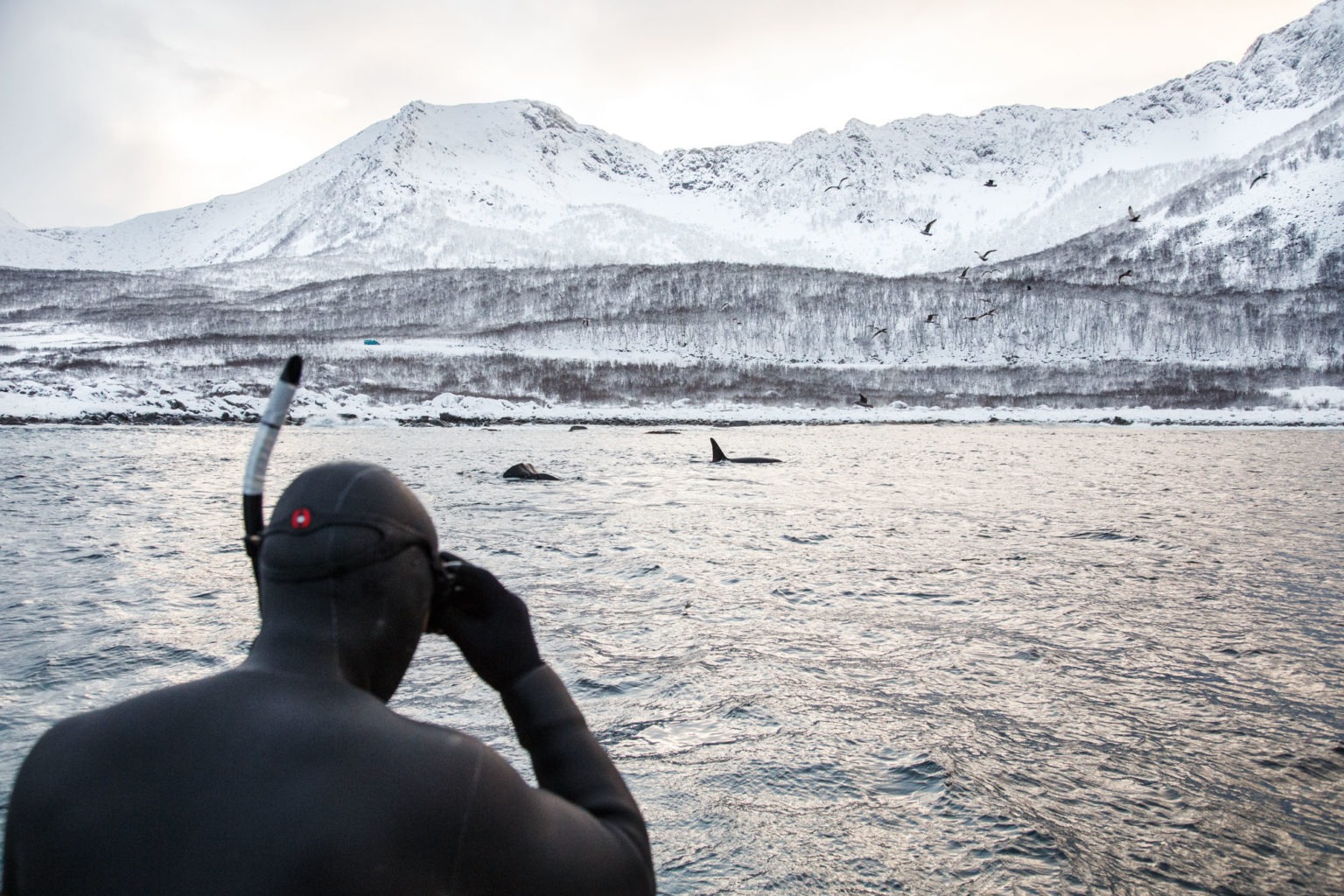
Finding the right gear is usually done through online research, communicating with other expedition sailors, connecting with the supplier in question, and then finally drawing the conclusion based on the matrix of inputs. We have been fortunate enough to have some of our gear sponsored. We do, however, only accept gear that we believe is the best suited to our needs.
In general, we like to keep the boat configuration as clean and simple as possible. We are also influenced by space limitations, and all gear is subject to a cost benefit assessment. Furthermore, we focus on longevity from a performance point of view, cost point of view and from an environmental point of view.
Expedition sailing involves a large amount of aspects, ranging from sailing itself, to meteorology, understanding nature and technical know-how. It´s a massively complex activity, which is part of the reason for our passion for sailing. In addition to the sailing, we have the additional complexity of a wide range of activities such as climbing, diving and paragliding. As for the gear, we never rest on our laurels. It´s continuously tweaked and improved as we gain more experience.
The following topics will be covered.
ELECTRICITY – ELECTRONICS – SAILS – ANCHORING – PROPULSION – WINTERIZATION – CLOTHING – DINGHY – SAFETY – DIVING
The vessel is equipped with 2 x 100 AH Lithium batteries. They have worked exceptionally well so far, securing ample amounts of electricity, allowing for charging the extensive amount of camera gear and computers while running the heating system and fridge. The batteries were of the make Topband, supplied by Skanbatt Norway. The batteries can be charged by the engine, shore power or by the Superwind generator.

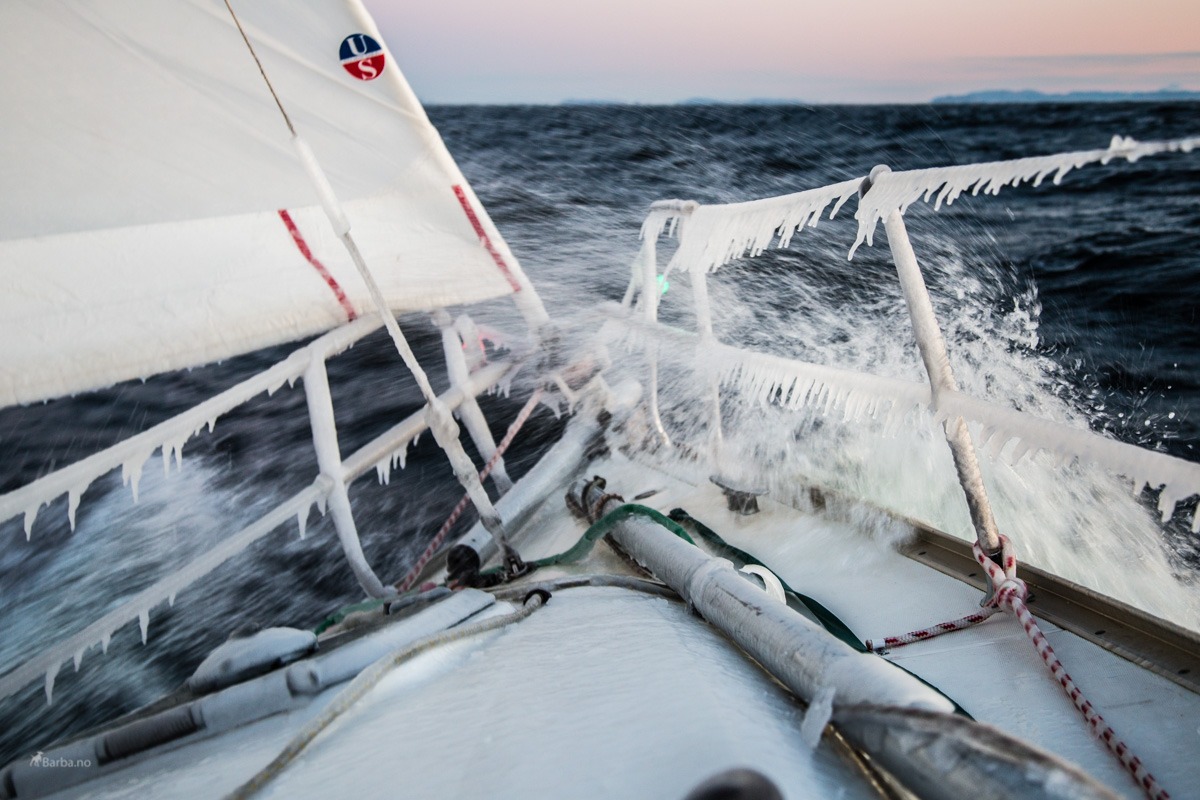
We use a Facnor roller furler for the headsail, allowing for quick launch which is of particular importance should we have an engine failure at a critical moment. The mainsail is a slab-reef system, with three reefs. Reef no. 3 is heavily reefed. In addition, we have a storm jib and a gennaker to cover strong and low wind conditions. The sails are designed following the recommendations of Skip Novak, in cooperation with Ullmann-Sails.
Our main policy is to avoid stormy weather through careful weather forecast observations. The sail wardrobe and boat would look different should we operate in the Southern- Oceans where we are more likely to encounter extreme weather conditions.
Should we get caught out at sea, we have a Jordan-series drogue anchor, which is attached to a total of 8 points on the stern to avoid breakage. The drogue has yet to be tested in strong winds. Additionally we have added a cutter stay and running backstays, as well as a retractable bowsprit.
A new Yanmar 3YM30 AE was fitted in 2015, replacing the old Yanmar 3YM30 which was operating flawlessly until then. The engine is a critical component, as we often operate in lee-shore conditions and also rely on it when entering port in strong wind conditions. 29 HP is well suited for our purpose, offering less than 2 litres per hour, when steaming at 5, 5 knots. The propeller is of the 3-bladed foldable type.
The engine problems we have had to date have all been related to contaminated diesel, a problem which is not related to the engine itself. To avoid future problems, we plan to install a separate drainage valve in the main tank.
We have a rope cutter on the cutlass bearing. This minimize risk of catching lobster traps when approaching anchorages at night. The latest upgrade is a centaflex coupling, a rubber transmission from the engine to propeller shaft. This unit reduces noise and vibrations in the vessel, and also reduces stress on the gear box.
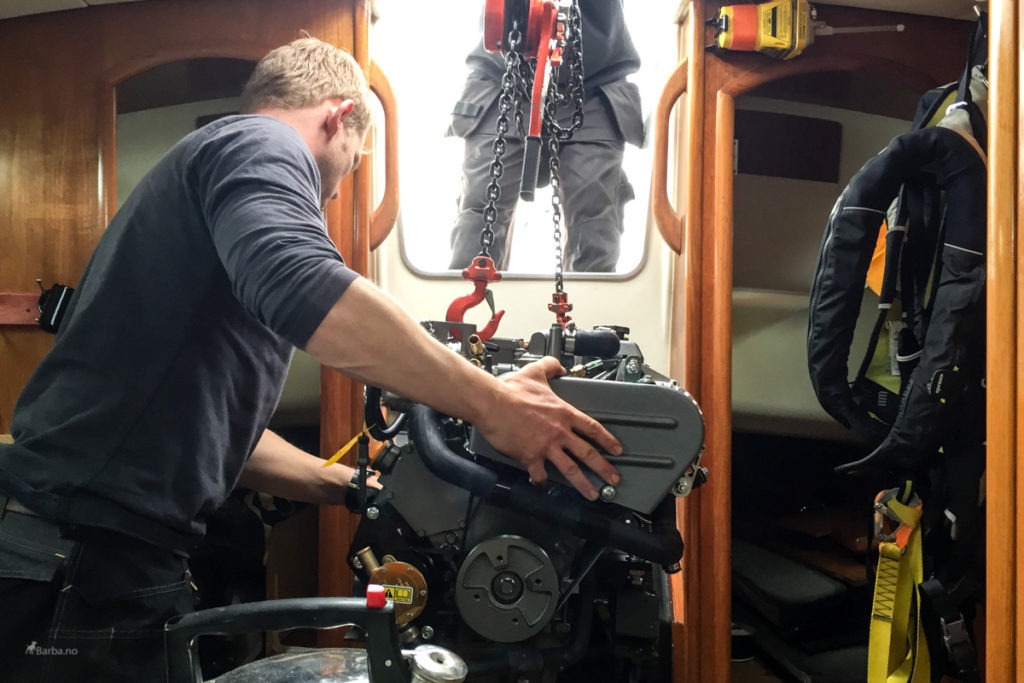

All the navigation electronics were upgraded to B&G in 2015, and has since seen continuous upgrades to the latest versions. In addition to standard gear, we have an AIS, radar and forward looking sonar. The latter two are of particular use in low visibility and/or poorly chartered waters. In our opinion the AIS is mandatory for cruising in Norwegian waters and beyond. We use OpenCPN as a back-up chart system on laptops, and finally Navionics on Ipad and paper charts should we run out of power.
When outside range of normal means of communications we use the Iridium phone in combination with the brilliant UUPlus software to download weather files and ice charts.
S.V. Barba is not really built for winter time usage, but we still manage to keep the temperature above 20°C inside, even when the temperature drops to -20°C on the outside.
Our main system for heating is a 4000-watt Webasto diesel heater, with outlets in all cabins. This has worked flawlessly for 4 years. Given its importance we also carry spares and a separate unit in backup. We try to run it at maximum power, to avoid build-up of soot in the carburetor. We would not recommend a 5000-watt unit, as it would be running at a sub optimum level.
In addition, we have a 2000-watt heat exchanger, using cooling water from the engine to provide “free” heating whenever the engine is running.
In winter time the bow is exclusively used for storage, as it´s impossible to keep it warm due to poor insulation. The mast (very important) is covered by a 10 mm glue on insulation mat and the same goes for the underside of the flooring. All the cabins have cheap, yet sufficient insulating mats under the mattresses, as well as on the interior hull. We also have a plastic sheet providing circulation under the mattresses, more or less eliminating condensation. The same insulation mats are used under the gangway, although fitting these is not possible to execute in an optimal way. A crucial improvement is to cover the deck hatch windows with plexiglass covers, attached with velcro.
The most comfortable and efficient insulation to date has been to cover the inside floor with environmentally friendly cork from the company SeaCork. The long term plan is to cover the exterior deck and cockpit with cork.
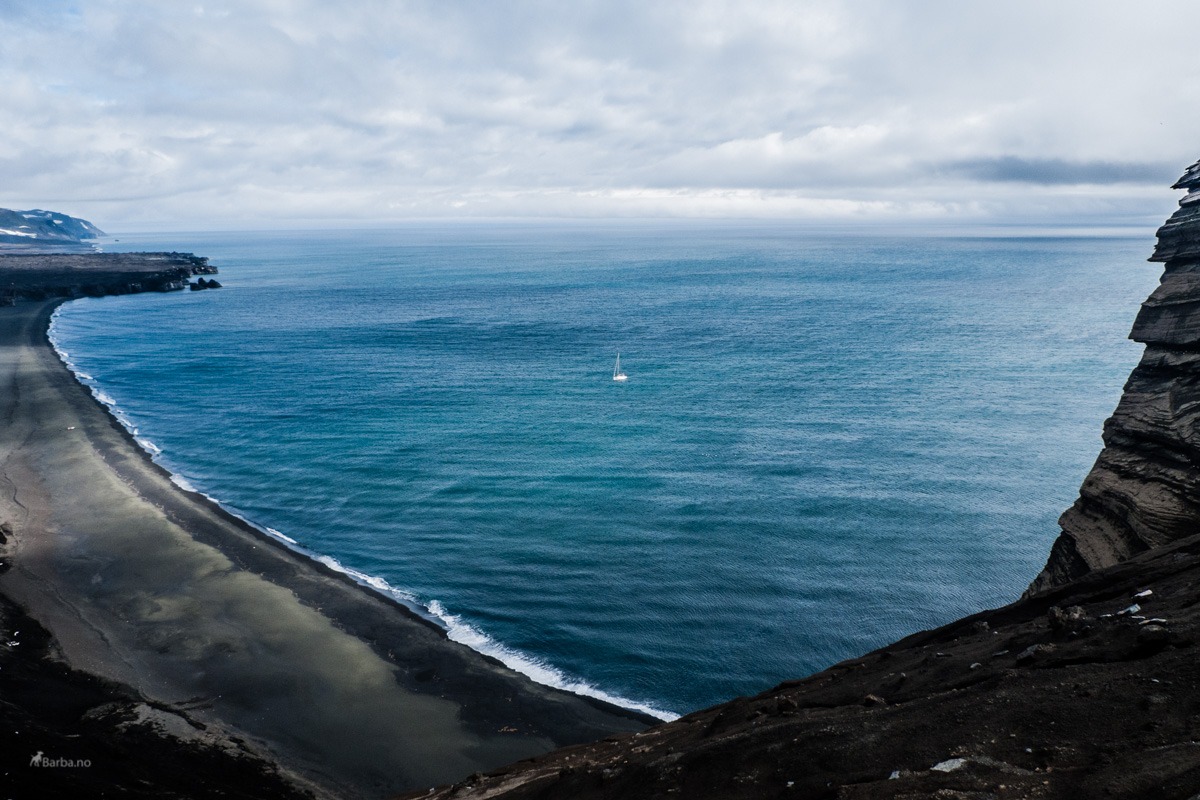
Anchoring is an art form in itself, which we have not yet fully mastered. We had massive problems with a poor performing anchor in Svalbard during the 2015 expedition. Based on previous experience, we have upgraded to a 20 kgs Spade anchor, as well as an electrical Lofrans X2 windlass and 30 meters of chain, followed by 70 meters of rope.
In addition, we have 2 x 100 meters Dyneema rope for mooring the boat to shore, as well as traditional nylon ropes should they be required. For longer trips we always carry a laser range finder to facilitate anchoring.
The issue we had with the boat chasing in the wind when at anchor has been resolved with an anchor sail, although it still needs to be tested in storm force winds.
1-2 under layers of wool are worn at all times once it starts getting cold. Wool has the following qualities that makes it superior to anything we have tried to date: warm even when wet, fire retardant, does not smell excessively after prolonged use and finally, it´s a long lasting natural product.
Wool is also the only material used in the boots, in gloves and in caps. When it starts getting properly cold, we use thermaloft as mid-layers. Also a good wool sweater serves well as a multipurpose under garment. As for shoes, we try to avoid rubber material due to its thermally conductive properties. Light, warm shoes with space for an extra pair of socks is usually the preferred option. The only thing that works when wet and cold is wool gloves inside fishermen’s rubber gloves. We have extra wool gloves, to be able to have a dry pair available at all times.
The outerwear clothing is Musto HPX offshore suits. We also have the drysuits in the same range for when the weather picks up.

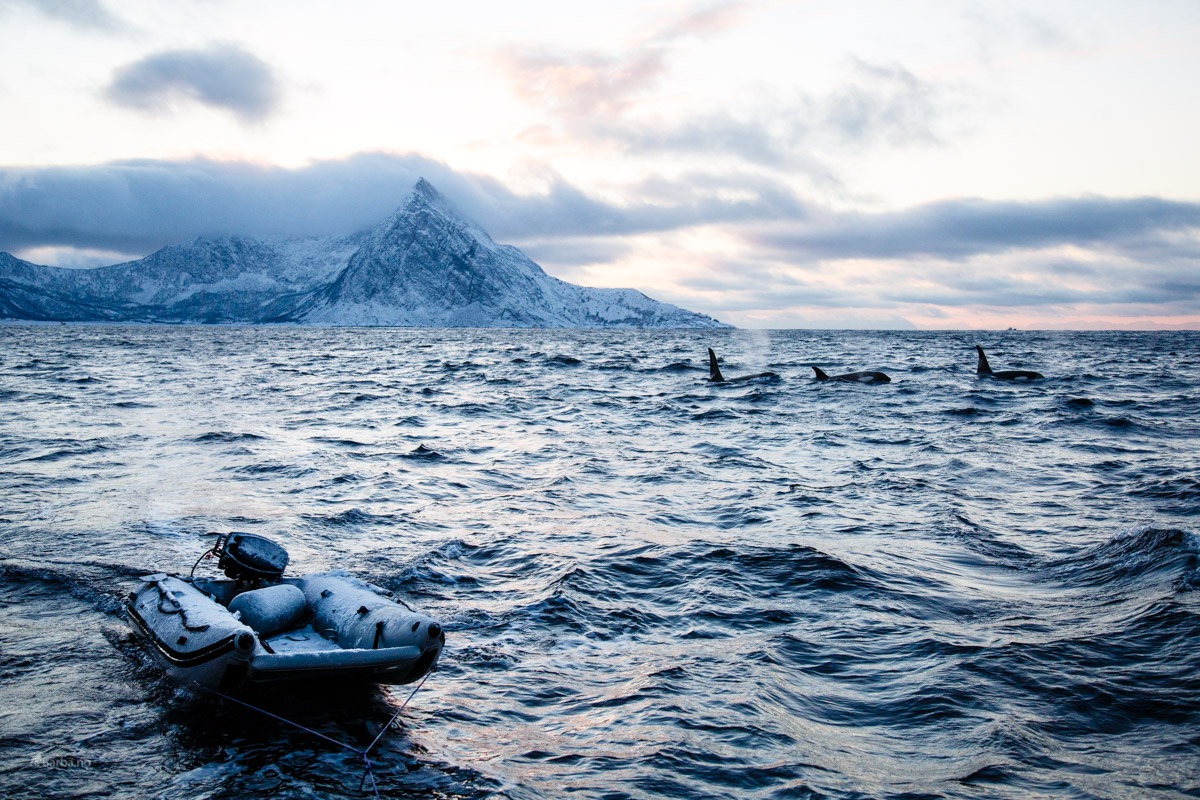
The dinghy is a critical tool for accessing the shore and shallow waters. We have opted for the Takacat 300 lite. If the foredeck was somewhat bigger, we would have preferred the 340 version for some extra space. The design radically differentiates from traditional dinghy design, which has remained more or less unchanged for the past 30 years.
Due to the katamaran design the Takacat requires less engine power to plane, creates a fraction of the drag when being towed, provides easy access to the water and most importantly will not fill up with water during a critical beach landing. Our current engine is an 8 HP Yamaha, two-stroke. Two stroke outboard engines are the preferred option as they are lighter and more reliable.
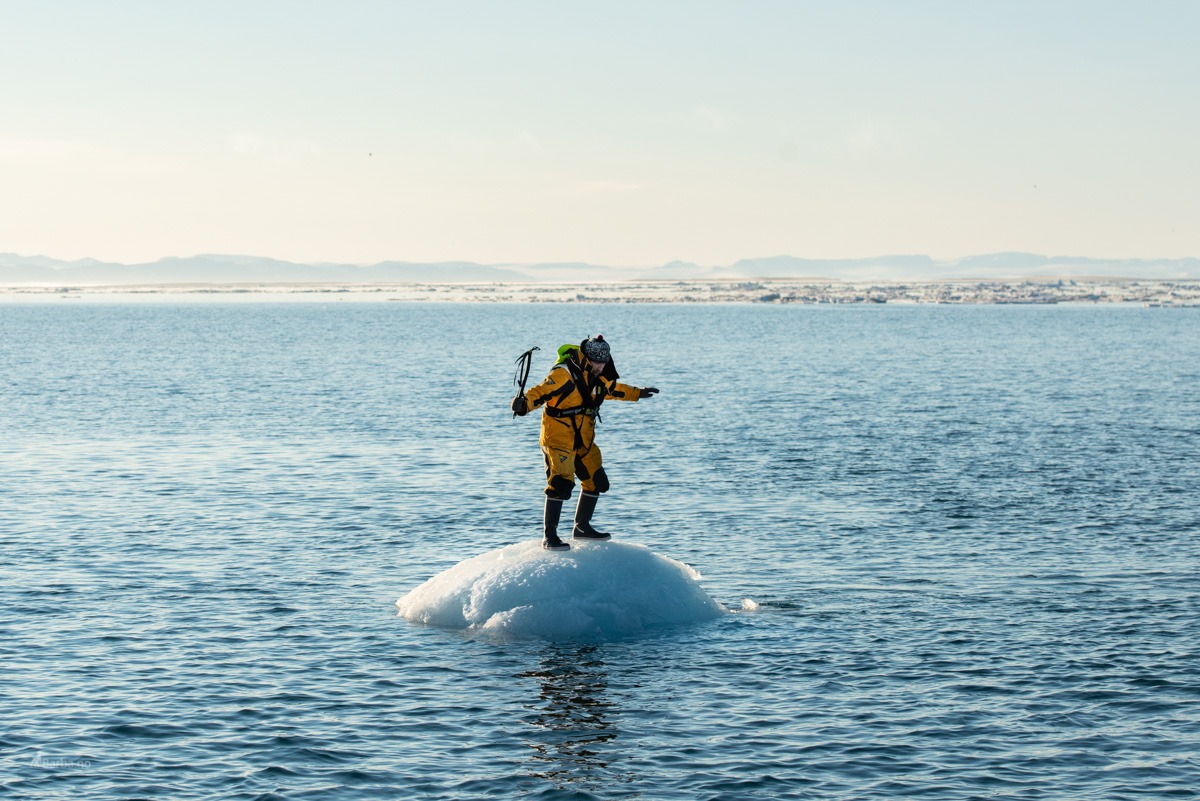
We adhere to the ISAF offshore sailing regulations. In addition, we have drysuits and personal AIS trackers integrated into Spinlock lifejackets. Our procedures during diving are described in this article in Alert Diver. Please keep in mind that the boat is adapted for use in the North-Atlantic. The Southern-Ocean would require a different boat altogether.

The diving gear is based on a mix between military diving and the DIR diving philosophy. This Alert Diver article summarizes some of our thoughts on diving gear. We currently have a single tank setup due to space limitations. Ideally, we would opt for a double tank setup.
Our work